Dinosaurs are some of the most fascinating animals to have ever roamed the earth. There were thousands of different species — both large and small — which lived millions of years ago. Although a vast amount of research has been undertaken, there are still more things to learn about them, including many as-yet-unknown facts. But, in the meantime, take a look at this complete list of dinosaurs that start with H!
Hadrosaurus
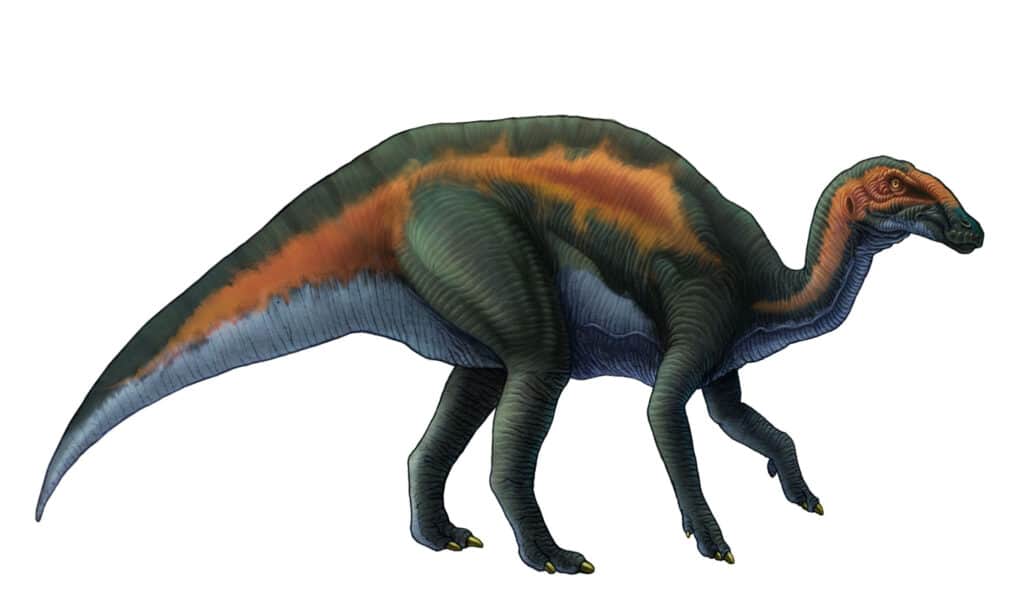
was around 26 feet long.
©Bee_acg/Shutterstock.com
The first dinosaur on the list is the Hadrosaurus which was an ornithopod that lived during the Late Cretaceous period in what is now North America. Its name is derived from the Greek words for “bulky lizard”. Hadrosaurus was approximately 26 feet long and had a heavy body with a long tail. It was a herbivore and had a distinctive beak, which it used to eat vegetation such as twigs and leaves.
Herrerasaurus
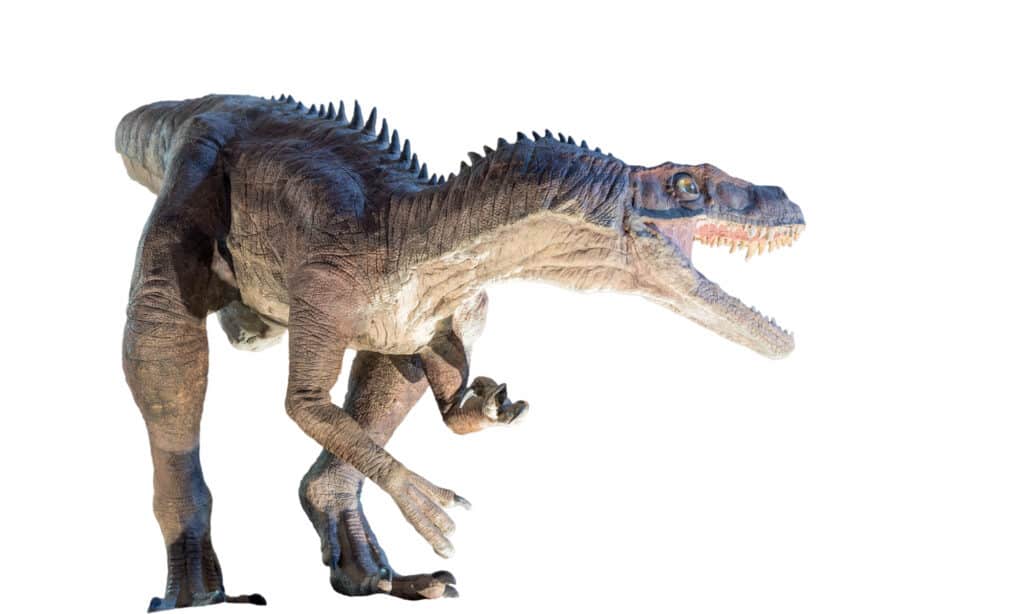
had threatening talons and sharp teeth that made it a formidable opponent even to similar-sized dinosaurs.
©Lefteris Papaulakis/Shutterstock.com
Next is the Herrerasaurus which was a carnivorous dinosaur from the Late Triassic period. The first fossils of Herrerasaurus were found in Argentina in 1959. Herrerasaurus was 15 to 20 feet long and averaged 3.25 feet high at the hip. It had powerful hind legs, meaning it was a quick runner, while its sharp teeth and claws meant it was a fierce predator. Herrerasaurus inhabited woodlands and preyed on small to medium-sized animals.
Haplocanthosaurus

lived during the Late Jurassic period.
©FunkMonk (Michael B. H.), CC BY-SA 3.0 <https://creativecommons.org/licenses/by-sa/3.0>, via Wikimedia Commons – License
The Haplocanthosarus was a sauropod that lived during the Late Jurassic era. It had a row of single spines down its back, earning it its name, which means “simple-spined lizard”. Haplocathosaurus was around 49 feet long and had a long tail and a long neck with a small head. It lived in North America, where it ate a variety of leaves, plants, and shrubs.
Helioceratops

lived in China during the Cretaceous period.
© – License
One of the most unusual dinosaurs on the list is Helioceratops, which was approximately 4.3 feet long and had short forelimbs. It may have also had a horn on its face, something that has earned it its name, given that its scientific name means “horned face of the sun”. Helioceratops lived in the middle of the Cretaceous period in the area that is now China, which is where the first Helioceratops fossils were discovered.
Heterodontosaurus
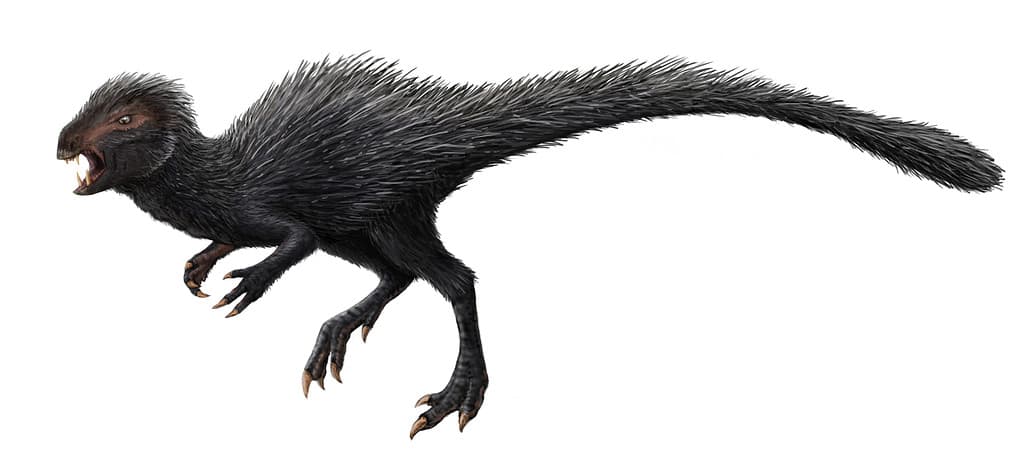
had prominent canine teeth but was a herbivore.
©FunkMonk (Michael B. H.), CC BY-SA 3.0, via Wikimedia Commons – License
Another relatively small dinosaur was Heterodontosaurus, which was only 3 feet 10 inches to 5 feet 9 inches. Its name means “different-toothed lizard”, something that is evidenced by the three different types of teeth that it possessed — prominent canine teeth, smaller incisors, and “chisel-like” teeth which were appropriate for chewing plant material. Heterodontosaurus lived during the Early Jurassic era in the region that is now South Africa.
Hypsilophodon
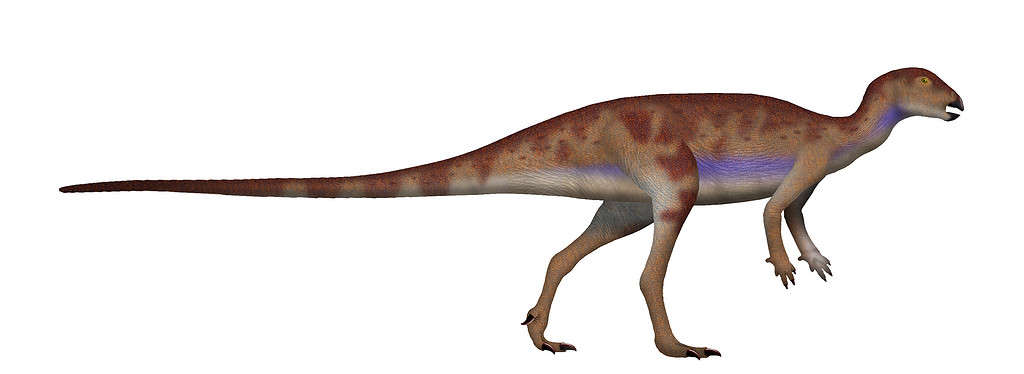
lived in forests across what is now Europe.
©UnexpectedDinoLesson, CC BY-SA 4.0, via Wikimedia Commons – License
The next dinosaur is Hypsilophodon from the Early Cretaceous period. Hypsilophodon inhabited forests across Europe, with numerous fossil findings giving a good insight into its lifestyle. Hypsilophodon was a bipedal dinosaur around five to 6.5 feet long. It was a fast, agile animal, which is evidenced by its lightweight skeleton and long legs. Hypsilophodon means “high-crested tooth.” It was a herbivore and had a distinct, pointed beak which it used for pulling at vegetation. It also had fan-shaped rear teeth.
Huayangosaurus
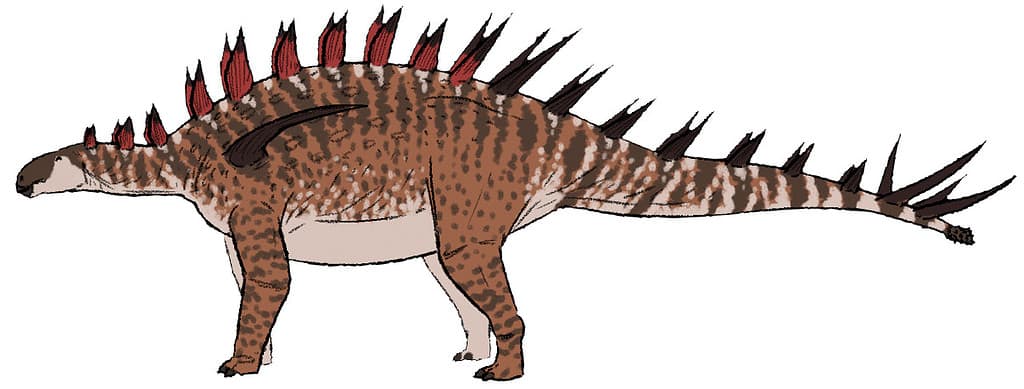
Despite its size,
Huayangosauruswas a relatively small stegosaurian dinosaur.
©Connor Ashbridge, CC BY-SA 4.0, via Wikimedia Commons – License
Huayangosaurus was a stegosaurian dinosaur which was around 13 feet long. It had two rows of osteoderms along its back and a spiked tail. It lived in China during the Middle Jurassic period, and its remains were first discovered in 1979. Huayangosaurus was a herbivore and likely ate a wide range of plants and leaves. Despite its relatively bulky body, Huayangosaurus was one of the smallest stegosaurian dinosaurs and had a large number of larger predators.
Hippodraco
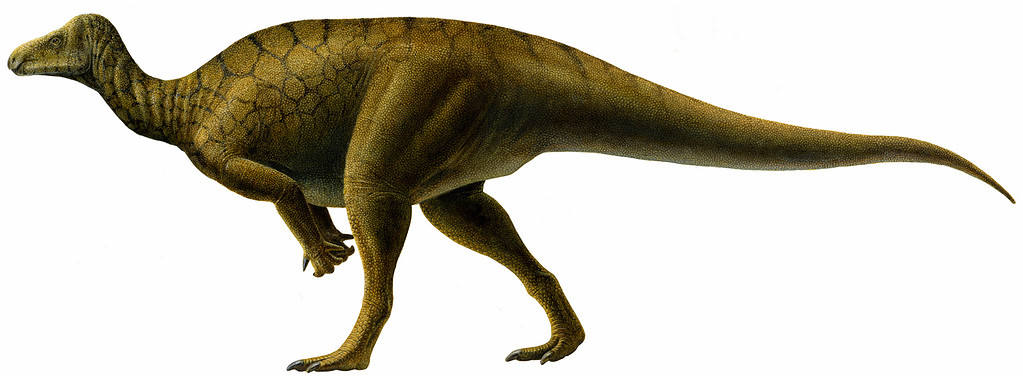
was a herbivorous ornithopod dinosaur.
©Lukas Panzarin, CC BY 2.5, via Wikimedia Commons – License
Another ornithopod is Hippodraco, which lived in the Early Cretaceous period across North America. It was approximately 15 feet long, although the fossil of only a single juvenile specimen has been discovered. Hippodraco was a herbivore and would have eaten a variety of vegetation. Given its relatively small size, Hippodraco would have had a number of predators, particularly larger carnivorous theropods.
Full List of All Dinosaurs That Start With H
As well as the dinosaurs that we’ve highlighted above, there are still many more that begin with the letter H. Let’s take a quick look at them below.
- Hadrosaurus
- Haestasaurus
- Hagryphus
- Hallopus
- Halszkaraptor
- Halticosaurus
- Hamititan
- Hanssuesia
- Haplocanthosaurus
- Haplocheirus
- Harpymimus
- Haya
- Heishansaurus
- Helioceratops
- Heptasteornis
- Herrerasaurus
- Hesperonychus
- Hesperornithoides
- Hesperosaurus
- Heterodontosaurus
- Hexing
- Hexinlusaurus
- Heyuannia
- Hierosaurus
- Hippodraco
- Histriasaurus
- Homalocephale
- Hongshanosaurus
- Hoplitosaurus
- Horshamosaurus
- Hortalotarsus
- Huabeisaurus
- Hualianceratops
- Huallasaurus
- Huanansaurus
- Huanghetitan
- Huangshanlong
- Huaxiagnathus
- Huayangosaurus
- Hudiesaurus
- Huehuecanauhtlus
- Huinculsaurus
- Hulsanpes
- Hungarosaurus
- Hylaeosaurus
- Hypacrosaurus
- Hypselosaurus
- Hypselospinus
- Hypsibema
- Hypsilophodon
- Hypsirhophus
The photo featured at the top of this post is © ALLVISIONN/iStock via Getty Images
Thank you for reading! Have some feedback for us? Contact the AZ Animals editorial team.






